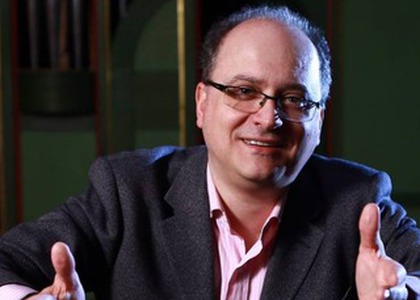> [Archived] Interviews

Interview with Dan Dediu about the soundtrack of the Povestea Iei performance
Povestea Iei(The Magic Blouse) will be performed today at UNESCO Grand Auditorium - Gigi Căciuleanu's choreographic work. The soundtrack was signed by composer Dan Dediu.
What can you tell us about this performance?
It is a performance about music, expression, color and light. I did research in various sources, on the Internet, I read different things and listened again to various types of traditional Romanian music, then I drafted a script, since this is both a choreographic and a musical work. I've been working on writing and conducting this piece for a month and a half. When I was done, revising it was easy.
When it comes to the musical content, I can also tell you that I've been considering various dance performances as this choreography has given me the opportunity to reflect more on traditional Romanian dances, which I've revised from a modern perspective. Each has played a part. It is a pleasure and so I can sincerely say this as an outsider because out of all those who collaborated, I had to be the first one to finish since they were all waiting for my music.
You said you did research for writing this music. Did you find anything new?
No. I was familiar with the tunes I was using, but when I looked at them from this perspective and the purpose I had in mind, I started seeing them with different eyes; they gave me the opportunity to use them in a creative way.
I rewrote them, drafted again, reinvented the melody and rhythms as well as the harmony… and they received a different shape because I wrote them to be performed on the stage through dance performances.
I also went over some dance performances of my work, A Lost Letter, written by Caragiale. This work is about traditional Romanian dances, which are portrayed in an universal context; they play their part in it.
I am very curious about how the public will receive this work.
Both ia (traditional Romanian clothing) and the Romanian traditional dances are symbols of national tradition, but they can be - and must be - built in a framework that can be understood by those who are not Romanian. Therefore, they are universal symbols. I see this work similar to Noah's Ark. Think about it: in 50 or 100 years, many of the Romanian folklore dances might disappear; however, they will carry on through these greater works which shelter them like Noah's Ark, and it saves them from oblivion.
Translated by Denisa Stanciu,
University of Bucharest, Faculty of Foreign Languages and Literatures, MTTLC, year I
Corrected by Silvia Petrescu














